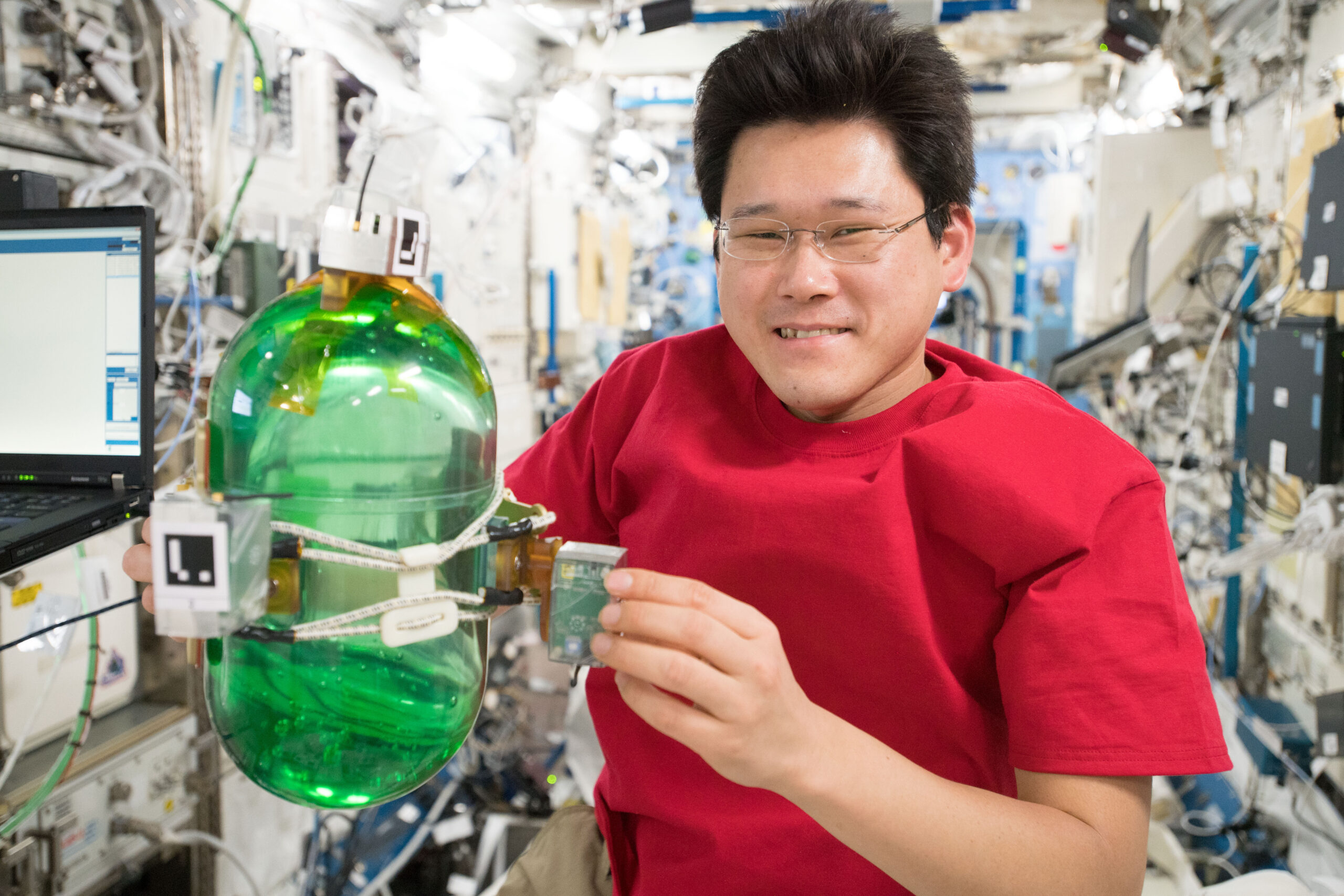Sloshing with SPHERES: Testing Methods to Steer Passive Spacecraft Containing Liquid

Japan Aerospace Exploration Agency (JAXA) astronaut Norishige Kanai works on the Synchronized Position Hold, Engage, Reorient, Experimental Satellites (SPHERES) Tether Slosh experiment, that uses two SPHERES robots tethered to a fluid-filled container covered in sensors to test strategies for safely steering spacecraft such as dead satellites that might still have fuel in the tank.
Media Credit: NASA
November 7, 2018
Crew members onboard the International Space Station (ISSInternational Space Station) National Lab recently ran tests using small spherical robots as part of an investigation evaluating methods to actively steer a passive body that contains liquid—such as a disabled spacecraft with fuel in its tank—in space. The robots used in the investigation, which is being conducted by AIRBUS DS Space Systems, are called Synchronized Position Hold, Engage, Reorient, Experimental Satellites (SPHERES) and maneuver using small puffs of compressed gas.
Movement caused by the sloshing of liquid inside a passive body can make it difficult to steer the object in space. To test methods of automated steering for such objects, AIRBUS DS Space Systems is using two SPHERES robots tethered to a fluid-filled container equipped with sensors that record acceleration data.
Check out the NASANational Aeronautics and Space Administration time-lapse image below showing ISS crew member Serena Auñón-Chancellor conducting test runs for the investigation.

SHPERES and Zero Robotics
SPHERES robots are also used by Zero Robotics, a Space Station Explorers partner program run by the Massachusetts Institute of Technology. Zero Robotics holds middle school and high school competitions in which students program SPHERES robots to remotely compete in a tournament that is held onboard the space station and refereed by ISS crew members. Learn more about Zero Robotics in this ISS360 article.
Visit www.spacestationexplorers.org for more information about the Space Station Explorers Consortium, a growing community of ISS National Lab partner organizations working to leverage the unique platform of the ISS to provide valuable educational experiences.